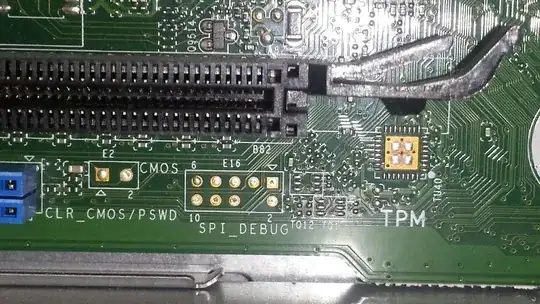Many TPM issues are reported by users in various online forums. One issue is the TPM being found in the operating system or BIOS without the TPM being useable (e.g. TPM shows in Windows 10 Pro Device Manager but BitLocker cannot be used).
A fail safe way to identify the presence of a TPM in a computer is to physically identify it on the motherboard but how does one do this?
For some motherboards the TPM is a small chip that is added to a slot and many examples are commercially available.
However, in other motherboards the TPM is an integral part of the motherboard. The question is how are these identified? In the photo we can see the TPM area on a HP 290 G2 SFF motherboard (86E9 Milton). Should there be a chip here? Is the TPM area empty? Or is this in fact what an integrated TPM looks like?

